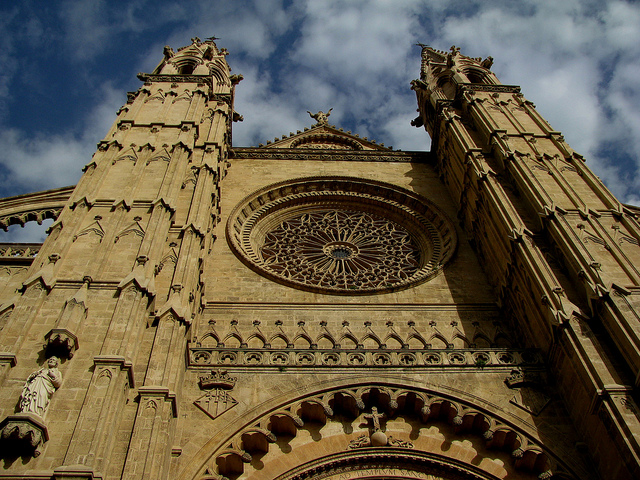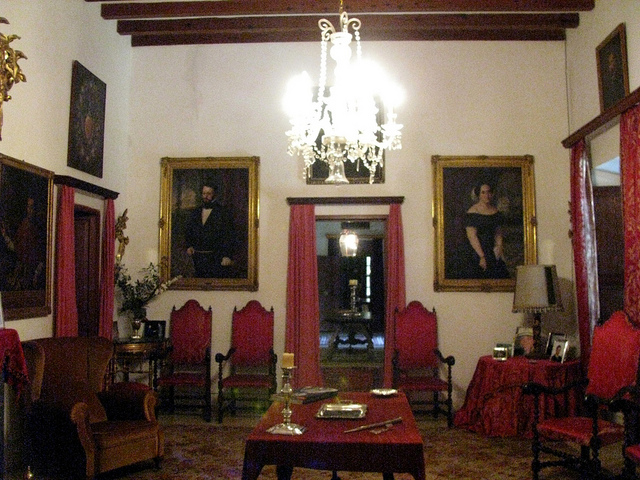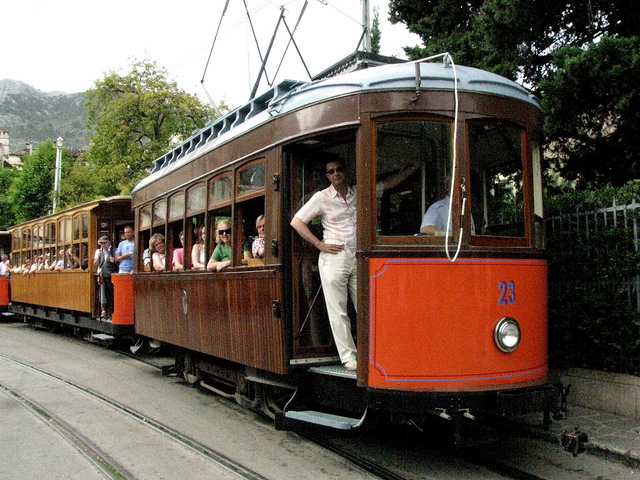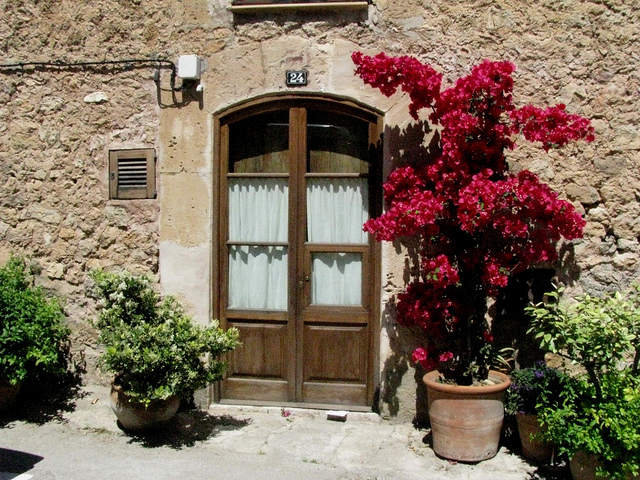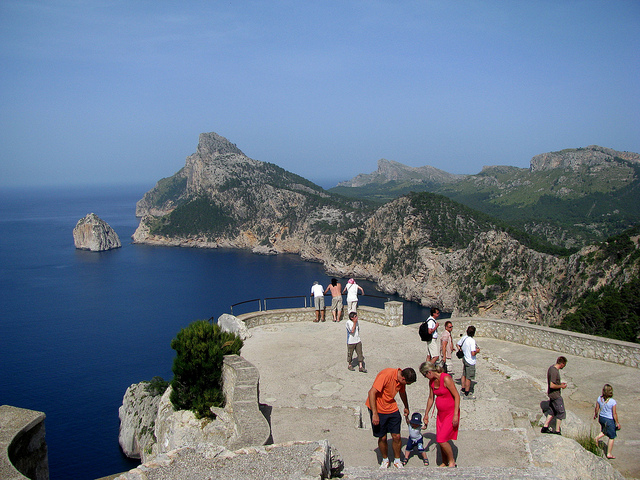Our location in Palma Nova on the western bay of Palma was very convenient with one exception: several of the hotel guests came home between 3 and 6 am in various states of inebriation and were hollering loudly to each other. Their incomprehensible utterings reverberated in the concrete hallways and inevitably woke me up. Just as I was ready to fall asleep again, another group of “lager louts” was coming in and making their presence known to everyone.
Apart from that our little apartment at the Torrenova Aparthotel had been a great choice, because in the morning I could sit down on our large balcony overlooking the Mediterranean and enjoy a good home-made breakfast. The weather so far had been perfect and not a cloud covered the sky.

Beautiful cove along Mallorca’s western coastline
Shortly before noon we started our drive to explore the western side of the island. West of Magaluf are a large number of tourist developments, many of which are still under construction. We drove on the C719 highway to Santa Ponsa, a pleasant resort town on the west side of the island.
Santa Ponsa is particular popular with tourists from Ireland, Scottland, Wales, Holland and Germany. Many of the store windows feature English or German advertisements. This town also occupies an important part in Mallorca’s history: it was here that King James the First landed in 1229 to reconquer Mallorca after more than 300 years of Moorish rule. A big festival celebrates this historic event every September with a mock battle between Christians and Moors on the beach.

The harbour of Port d’Andratx
From here we drove further northwest to Port d’Andratx, another popular coastal village. As in many other Mallorcan towns, the harbour is fringed by an attractive promenade and several restaurants. Port d’Andratx is generally not a mass-market destination and attracts more independent travelers as well as Northern Europeans who have bought holiday homes here.
Real estate prices in these coastal towns are extremely expensive. I picked up a local real estate magazine that showed many villas and apartments that were selling for hundreds of thousands of Euros. Many properties were listing for amounts way above the million Euro mark.

Restaurants along the harbourfront in Port d’Andratx
Mallorca is particularly popular with German and British home-owners who either own vacation homes here or have permanently relocated on the island. As a result, real estate prices in Mallorca have increased dramatically over the last few years.
During our stroll through town we came across an Eroski Supermarket and decided to do some food shopping. We were amazed at the reasonable prices for fruits and seafood. What really surprised us was that the price of food was so low while prices in the local restaurants were much higher than in Canada. Most main dishes and seafood dishes were priced at a minimum of 20 Euros and going up into 30, 40 or even 50 Euros. Supermarket food in contrast was significantly less expensive than in Canada.

Church in Andratx
We drove back through the historic mountain town of Andratx and stopped briefly to explore the historic town core. We arrived back at our apartment with our loot, made a comfortable lunch and relaxed on the sunny terrace of our apartment, overlooking the glistening blue waters of the Mediterranean. In the evening we decided to explore the capital of the island, Palma de Mallorca.

View over the centre of Andratx
With about 400,000 inhabitants, Palma is by far the largest city on the island; it is also the commercial and cultural centre of Mallorca. Its history dates back all the way to Roman times when Palma was founded as a Roman camp. The Moorish period lasted from 902 to 1229 when King James the First reconquered the island.

Colourful tiles promote the glass factory Vidrierias Gordiola in Palma de Mallorca
From the 1600s to the 1800s the city suffered many pirate attacks. Economic growth occurred in the 19th century and from the 1950s onwards, mass tourism started to have an impact on the city. In 2001, almost 20 million people passed through Sant Joan International Airport, which is located 8 kilometres from downtown Palma.

Beautiful courtyards in Palma de Mallorca
Despite these enormous changes, Mallorca has managed to retain its historic ambience. We parked our vehicle on the Avinguda de Gabriel Alomer, one of the so-called “avingudas”, or avenues – a ring road that was built after the city’s fortification walls were taken down. From here it was a convenient walk into the centre. We walked past the Arab Baths, the only building left that dates back to Arab times.

View over Palma’s Parc de la Mar
